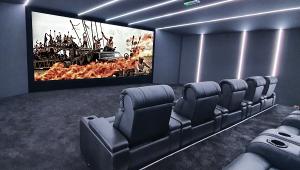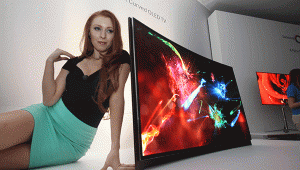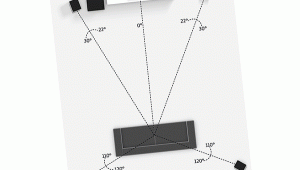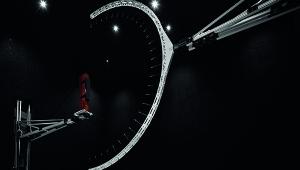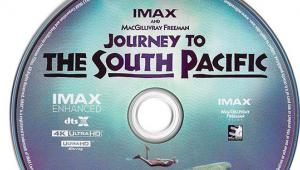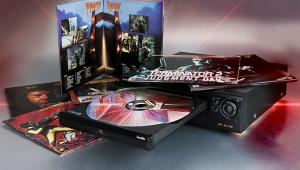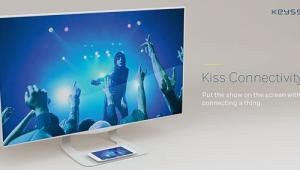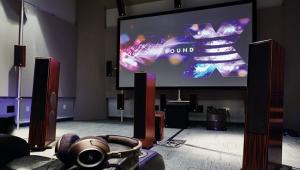Five years of 3D TV!
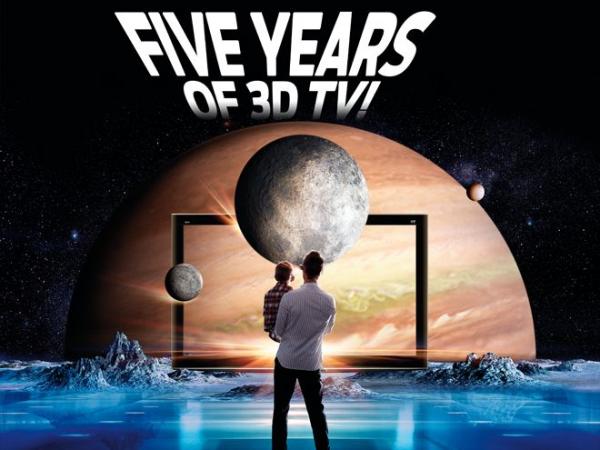
Can it really be five years since a TV and movie industry desperate to find the next big tech temptation set out to entice us and our traditionally 2D AV brains into the third dimension? 'Fraid so.In fact, it’s a bit longer than that if you take the 2009 launch of Avatar as your 3D starting gun. At HCC, however, it was the Summer of 2010 when the format became a going concern, marked by the arrival in the UK of the first 3D TV sets.
A heck of a lot has happened to 3D in those five years – some of it good, much of it bad. So here we’re looking back over its rollercoaster ride of ups, downs and more downs to see where it all went wrong. And maybe – just maybe – where it might still be able to get things right.
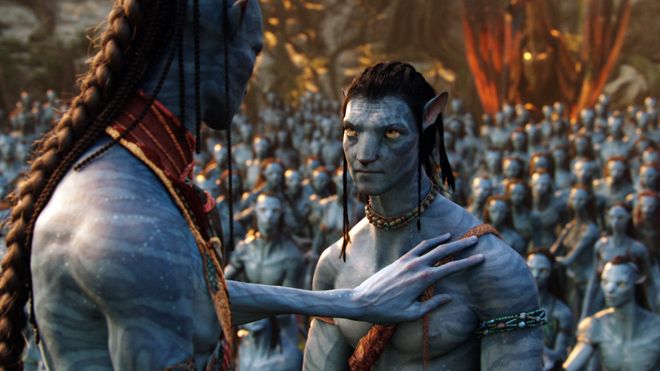
So Avatar, then. Try as hard as you want, you simply can’t ignore James Cameron’s technical tour de force in any discussion of modern 3D.
Cameron’s film, together with his abundant enthusiasm for his new 3D filmmaking ‘toolkit’, had people flocking to the cinema in record numbers, practically falling over themselves to don the 3D glasses eagerly thrust at them by giddy cinema staff.
It’s just like being in the movie, we were told. You can’t take your eyes off the screen. You just feel so much more involved with the characters. The action scenes are more actiony. All these claims and more were breathlessly flung Avatar’s way. And many of them held up to scrutiny. (More recently I’ve taken part in research commissioned by Vue Cinemas suggesting that watching 3D can make you smarter – although overall my IQ still seems to be suffering an inverse relationship with my age).
Unsurprisingly, the home entertainment industry pounced on cinema's new love affair with 3D. It was manna from heaven at a time when sales of HD TVs were stagnating – this was also the era of early smart TVs that were anything but. 3D-capable sets were rushed to market, irrespective of the fact that content was – and to some extent always has been – in painfully short supply.
And HD is key to the modern 3D story. One of the key elements of the 3D-on-your-telly push was the idea that you could watch 3D at Full HD resolution, rather than the available pixels in your HD screen having to be shared out to deliver a reduced- resolution stereoscopic image. TV makers achieved this by ramping up screen frame rates so that they could send out two consecutive Full HD images – one for each eye – in such quick succession that when seen through a pair of powered shuttering glasses your brain stitched them together to create a 3D effect.
It was actually a pretty brilliant idea. The only problem being it was too advanced for the TVs trying to support it. So instead of being able to marvel at a 3D version of the gorgeously crisp, punchy, detailed images we’d become accustomed to seeing on our HD TVs, we instead found ourselves suffering, with headache-inducing regularity, problems like heavy ghosting noise, a flickering effect and quite painful reductions in a TV’s brightness and colour punch.
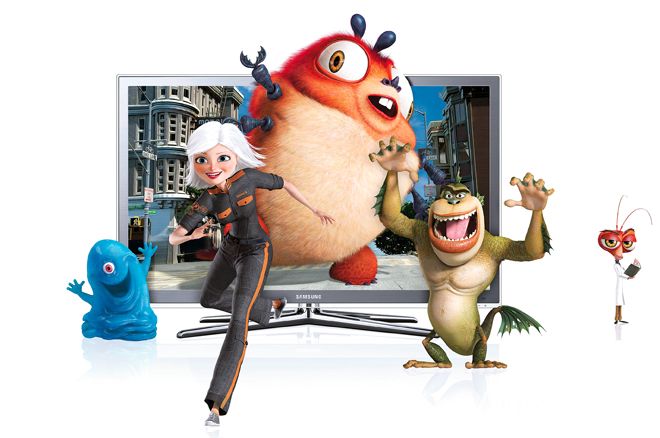
The ghosting issue – known as crosstalk – was a function of early 3D TV screens not being able to refresh their images fast enough to keep up with active 3D’s consecutive left eye/right eye approach. Information that should have, say, only gone to the left eye was hanging around on screen for so long that it was also sneaking into the frame created for your right peeper.
Plasma screens (remember those?) generally suffered less with crosstalk ghosting noise than LCD ones due to faster response times. They were hardly immune, though, plus they suffered much more with brightness loss when watching 3D than their LCD rivals. For early adopters, crosstalk was a big bugbear. And it actually still is, to an extent.
The flickering issue, meanwhile, was caused by the shuttering effect of the glasses, and could be so pervasive – especially in bright rooms – that some brands' 3D TVs carried an epilepsy warning. Really, whatever way you looked at them (if you really had to look at them), those early active 3D images were a pretty unholy mess that bore minimal resemblance to the Avatar 3D spectacle you'd witnessed at the cinema.
Cue LG, riding into 3D town like some kind of white AV knight with its passive 3D solution. This sought to remove active 3D's crosstalk and flickering issues by placing a polarising film over the screen that effectively divided up the TV real estate. A 3D film's left eye and right eye information could be sent out simultaneously, with static polarising filters on the glasses making sure that each eye only received the information it was meant to.
Some knowledgeable folk – including James Cameron – declared LG’s passive approach to be the saviour of 3D. But there was a problem. Namely that passive 3D didn’t deliver the Full HD experience we’d grown used to lapping up with our 2D Blu-rays.
Amidst a raging war of words with active rivals, LG tried many times to argue that its passive 3D pictures were still HD. But they simply weren’t. You were aware of visible line structure in the image at times too, and jaggedness around curved lines.
The passive approach was also sensitive to vertical viewing angles – watch from an angle of much more than 10 degrees above or below the screen and the crosstalk ghosting issue passive 3D was designed to remove suddenly went nuts.
As if all the basic picture flaws weren’t damaging enough to 3D’s chances as a home entertainment format, it wasn’t just people prone to epilepsy who were earnestly warned off watching 3D by the very TVs they wanted to watch it on. Also on the 3D ‘health advisory’ list were pregnant women, people with a history of strokes, kids under six and anyone who felt sleepy, tired, sick or, um, ‘incoherent’. Call us old-fashioned, but any home entertainment technology you're warned not to watch when you’re pregnant, tired or drunk was never going to fly.

Nor was it only early 3D hardware’s inability to recreate the joys of Avatar that damaged the format's image in its formative years. Hollywood also set about beating its new cash cow to death, churning out in Avatar’s wake numerous horrific-looking ‘3D’ movies that had been shot in 2D but converted into 3D by some primitive post-production processes. The 3D in the remake of Clash of the Titans, for instance, looked about as sophisticated as the parallax scrolling on an Atari ST.
This and other 3D abominations turned 3D into a cheap effect added for no other reason than to enable studios to charge a premium for cinema tickets or Blu-rays. Pretty much any notion of 3D as a new artistic movement was trampled under a money-grabbing stampede that reached its nadir from a home cinema perspective when Twentieth Century Fox did a promotional deal with Panasonic that meant that for what felt like years the only way you could get the ‘killer app’ of Avatar on 3D Blu-ray was by buying Panasonic hardware. Crazy.
And the technical and marketing issues prevalent in 3D’s early days were joined, of course, by a couple of significant ‘lifestyle’ factors. First, TVs then weren’t generally big enough to recreate the sense of immersion you get when a 3D image fills your field of vision. Even now, there’s an argument to be made that only 3D projectors deliver images big enough to produce a satisfying 3D experience. Second, and worst, people just couldn’t be bothered with the glasses. Especially in active 3D’s case, where the glasses could cost more than £100 a pair and regularly need recharging.
Ultimately so much damage was done to 3D’s reputation in the first three to four years of its life that it’s hardly surprising it’s an irrelevance to the mainstream TV market. Increasingly it's being dropped from the feature lists of even mid-range TVs. A browse of Industry stats confirm that just two per cent of The LEGO Movie’s Blu-ray sales were in 3D, and even in its most natural habitat, the cinema, 3D has seemingly lost its lustre. In 2014 just 28 major films came out in 3D, versus 34 in 2013 and 39 in 2011. Last year 3D versions of films accounted for 39 per cent of takings versus 53 per cent in 2012.
The amount of 3D content available is also dying a death – not great when really there’s never being enough of it to sustain interest in the format. Sky recently closed its 3D channel, for instance, and in the US Disney has pretty much stopped releasing its films on 3D Blu-rays. Perhaps most damning and damaging of all, the new Ultra HD Blu-ray specification includes no support for 3D – and when we spoke recently to the Blu-ray Disc Association, we were told it wasn't something that studios pushed for, regardless of the technical issues.
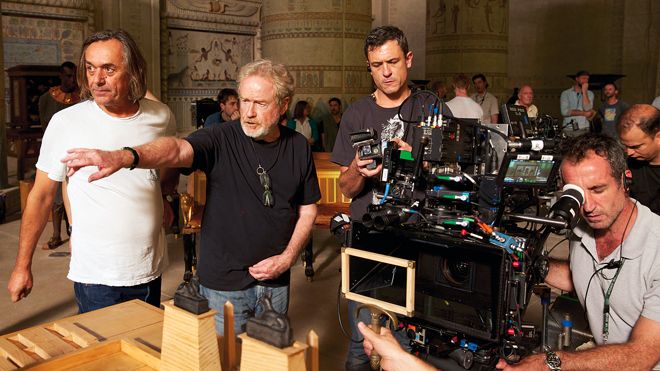
And yet for all 3D’s self-inflicted death by a thousand cuts, I – and many of you, judging by the letters we receive – still have a soft spot for 3D. And I think there’s some grounds for hope that 3D might make a comeback, albeit only in the dedicated AV world.
Why? Firstly because both the TV manufacturers and (with some dishonourable exceptions) movie studios have got a lot better at 'doing' 3D. The best LED LCD TVs are now brighter and faster with their crosstalk-related response times, while the arrival of 4K panels has enabled passive 3D TVs to deliver their more relaxed stereoscopic approach with Full HD Blu-rays, minus the jaggedness and loss of resolution.
The average TV screen sizes we’re buying have ballooned over the past couple of years too. More of us now watch TVs capable of delivering 3D images that fill a good chunk of our field of vision.
Some are hoping, too, that the arrival of TVs with greater screen resolutions might make glasses-free 3D workable. Given the awful experiences I’ve had with glasses-free 3D to date – including on a bleeding-edge 8K-resolution, 110in Samsung LCD TV at 2015’s CES – I personally remain sceptical that this will ever work satisfactorily.
On the filmmaking side of things, a few key directors – most notably Peter Jackson and Ridley Scott – have taken the format seriously, shooting in 3D rather than just adding it in post-production. And 2D-3D conversion processes have improved massively, with a couple of our favourite 3D experiences – Pacific Rim and the 3D re-issue of Titanic – starting out as 2D masters.
We're intrigued, too, by the use of high frame rates for improving the clarity of 3D – something Peter Jackson employed on the The Hobbit trilogy, and which James Cameron is also purportedly working with for Avatar 2.
Yep, Avatar 2. For better or for worse we appear to have come full circle with 3D, with a single upcoming (2017) film from a single visionary director again looking like the biggest hope for the flagging 3D industry. Let’s just hope that if Cameron and his blue-skinned friends do indeed reignite the 3D flame, the rest of the film and AV industry does a far better job of fanning it than it did last time around.
 |
Home Cinema Choice #351 is on sale now, featuring: Samsung S95D flagship OLED TV; Ascendo loudspeakers; Pioneer VSA-LX805 AV receiver; UST projector roundup; 2024’s summer movies; Conan 4K; and more
|



